Showing 101–110 of 184 results

This book is an enquiry into the past, based on the findings of Neolithic celts and tries to place the Neolithic culture in the right perspective. It presents the details of many excavations and provides valuable information helping to solve the Neolithic problem; also in understanding the transitions from wild species to domesticated ones and in food items like rice.
This book is an enquiry into the past, based on the findings of Neolithic celts and tries to place the Neolithic culture in the right perspective. It presents the details of many excavations and provides valuable information helping to solve the Neolithic problem; also in understanding the transitions from wild species to domesticated ones and in food items like rice.
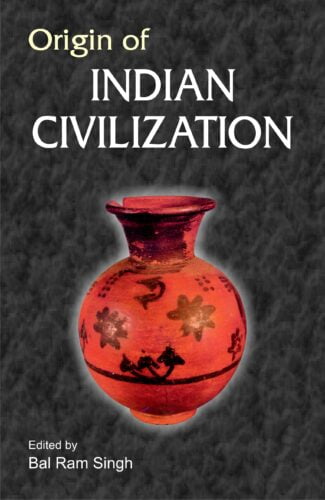
This volume comprises papers that explore various aspects relating to the origin and ancientness of the Indian civilization. It examines the Aryan invasion theory in detail and presents evidence and arguments against this theory.
India’s civilization has had a long existence that is documented in a huge amount and variety of literature, its scientific advancements over the centuries, its continuing cultural practices and preservation of art and music. This volume comprises papers that explore various aspects relating to the origin and ancientness of the Indian civilization.
Scholars here present diverse perspectives to delve into the contentions and controversies that surround questions such as the one concerning the origin of the Aryans. The papers examine the events that gave rise to the Aryan invasion theory and debunk the theory as a myth and present evidence and arguments supporting the theory that the Rigveda was composed in its bulk in the fourth millennium bce. An effort focuses on the problem of identifying the earliest region of the Aryan ecumene or homeland, including that of identifying its epicentre in India. Incorporating the latest research in history, archaeology, philosophy, genetics, and other disciplines, the papers explain the origin and evolution of the idea of the ancient South Asian city. Quoting from the epic literature, they attempt to derive the date of the Mahabharata War on the basis of the numerous astronomical references in the epic. They also analyze patterns of Y-chromosome diversity in the contemporary South Asian gene pool to throw light on migrations of modern humans within South-west Asia.
Accompanied by maps and other illustrations, the volume will interest scholars from a range of disciplines who are keen to study the origin and evolution of Indian civilization and culture.

The essays capture the changing contours of Orissan society, economy, religions, cultural life and art expressions. It embraces diverse specificities from every epoch of Orissan history and focuses on its archaeological remains, ancient maritime activities, Vaisnavite sculptures, etc.
Lying on Indias eastern coast, Orissa is the legendary old-world Kalinga. Which, conquered by Ashoka, metamorphosed this terrible triumphant emperor into a compassionate, remorse-stricken votary of the Buddhist faith. Today as ever before, Orissa not just has its share in Indias glorious cultural heritage, but epitomizes its architectural marvels and at once fascinating sculptures, including the erotic figurines frozen in stone. And these are best reflected in Orissas profusely sculptured temples, like the Sun-gods at Konark, Lord Jagannaths at Puri, and Lingarajas at Bhubaneshwar; besides the Jaina/Buddhist rock-cut caves of Khandagiri, Udayagiri and Dhauli. This felicitation volume, occasioned by Professor Mishras retirement, in 1997, from the University of Sambalpur, captures the changing contours of Orissas society, economy, religions, cultural life, and art expressions: from the earliest times to almost the present day. In 29 essays, each authored by an area specialist, the volume embraces diverse specificities from every epoch of Orissan history, focussing notably on its prehistoric painted rock shelters, archaeological remains, ancient maritime activities, major and minor religions, Vaisnavite sculptures, stellate temples, development of education and, besides these, its various tribal, revolutionary and socio-religious reform movements during the colonial rule. Professor P.K. Mishra, (born: 19 Jan. 1937), is a distinguished Orissan historiographer, extensively published author, and scholar with wide-ranging specialized interests. Recipient of two prestigious Senior National Fellowships (of ICHR and UGC), he has also surveyed and documented the monuments in Upper Mahanadi Valley on a Ford Foundation Project.
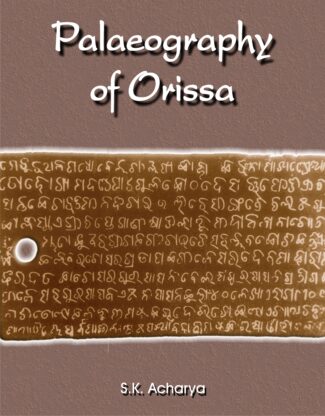
It studies the palaeography of Orissa, especially the evolution of the regional Oriya script, by analyzing several copper-plates and stone inscriptions. An attempt to resolve the prolonged debate on the parentage of modern Oriya script, considering the importance of geo-political forces and the cultural growth of a region.
The book studies the palaeography of Orissa from the third to the seventeenth century ad. It focuses on the evolution of the regional script of Orissa from the Bràhmã script to the advent of the modern Oriya script through various intermediate stages. Analyzing several hundreds of copper plate and stone inscriptions and with reproductions from facsimiles of many original inscriptions, the author delves into the palaeographical peculiarities of the scripts prevalent in different sub-regional/regional kingdoms of ancient and medieval Orissa. He followed the dominant stylistic nomenclatures for studying the scripts and emphasized on the importance of the geo-political forces in determining the writing style of a sub-region/region. The view that the process of `palaeographical segmentation ran parallel with linguistic segmentation’ has been successfully tested in Orissan context. The advent of the proto-regional and regional script of Orissa has been studied in the backdrop of this process. Besides, an attempt has been made to resolve the prolonged debate on the parentage of the modern Oriya script. It has been argued that political changes and ideologies of the ruling class were some of the determining factors in the growth and development of Oriya language and script. The work will be useful to scholars and students of history, culture, language and literature for understanding the growth and development of languages and scripts in interaction with the political milieu and cultural growth of a region.
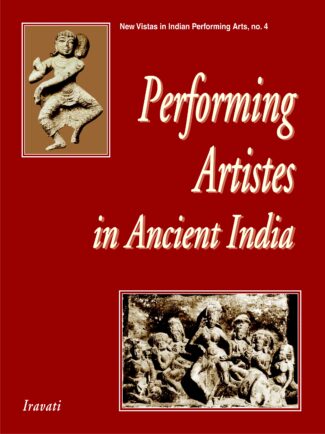
The book studies the evolution of ancient Indian theatre: it deals with the dramatic troupes, abhinaya, the stage and auditorium and visuals depicting scenes etched on temples and caves. It examines the kinds of performing artistes and their contributions.
Theatre in ancient India or natya incorporated various aspects of art and different branches of knowledge in its very definition not only histrionics but also dance, music and fine arts and branches of learning like history, philosophy and science. This work traces the evolution of the ancient Indian theatre, focusing on the contributions of the performing artistes. This scholarly treatise deals at length with aspects of dramatic performance like nature, kinds and members of dramatic troupes, abhinaya, the stage and auditorium, incorporating a number of visuals to depict the dramatic scenes etched by artists on pillars, temple walls, caves and objects. It classifies the different kinds and levels of performers: actors like Sailusa, Sailalin, Mankh Kusilava, Nata and Bharata, and actresses like professional actresses, courtesan actresses, divine actresses and so on. It refers to Natyasastra and other noted works on dramaturgy and their authors, and gives examples and illustrations from the famous epics, Buddhist and Jain literature and other works like the Arthasastra to throw light on values associated with drama and its actual performance in ancient times. The book, presenting well-researched facts and giving an insightful analysis, will prove useful to researchers and teachers of classical Indian art.

This book a collection of papers on Indian history deals with Greek historians, the Indian epic and Puranic tradition of historiography, cultural expansion of the Aryans, the society, trade and commerce in ancient India; and its contacts with other parts of Asia. The volume has analysed in detail Indias War of Independence 1857.
The volume is a collection of papers on certain aspects of Indian history, historiography and culture. The papers are fundamental, insightful and path-breaking to some extent. Combining literary, archaeological, scientific and other perspectives, they cover a range of subjects stretching from ancient to modern India. The volume deals with the Greek historians, the Indian epic and Puranic tradition of historiography, colonial and cultural expansion of the Aryans, the early history of north-west India, society, trade and commerce in ancient India, economic, political and cultural contacts of India with other parts of Asia in ancient and medieval periods, and the 1857 War of Independence in India. It takes up some very interesting and new subjects like role of Brahmanas in the anti-Alexander movement in north-west India and the concept of national integration in ancient India. It explores the sources of history of Uttar Pradesh and the antiquity of Ayodhya and historicity of Rama in an interesting study.
The volume will be of immense use to historians and scholars of philosophy.

This volume seeks to address the gap among various schools of thought about the origin of the Sanskrit language and the Indian civilization by proposing a possible resolution that results from a symposium of experts held at the University of Massachusetts USA. Accordingly the volume presents a balanced view of the seemingly intractable issues.
The earliest Indian inscriptions date from the third century before Christ. Arch-aeological and palaeo-anthropological evidence, as well as the Indian oral tradition, consistently point to the continuity of the Indian Civilization back to a much earlier date. However, the question of the origin of Indian Civilization prior to that period remains open. There are three main schools of thought in this regard. Proponents of the Indo-European theory suggest that the Sanskrit language and civilization were an intrusion into India from the West. Proponents of the continuity theory, on the contrary, believe that they arose locally. The third school of thought proposes that the current scholarship is insufficient to trace the Sanskrit language and civilization back to pre-historical times, and that further research is required to develop a fair comparison between the European languages and the Indian languages. Published literature in the field often reflects one or the other of these perspectives, rather than offering an integrated view.
This volume seeks to address this gap, by proposing a possible resolution to this seemingly intractable issue. It results from a symposium held at the University of MassachusettsDartmouth in July 2011, with invited scholars representing each of the various camps. During the seminar it became apparent that these different traditions are actually much closer to one another than what is usually believed. Accordingly, this is an essential volume for scholars seeking a balanced view on the quest for the origin of the Indian languages and civilization.
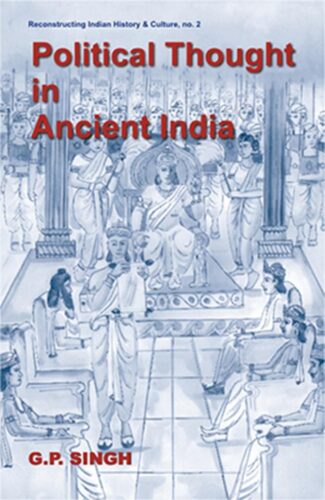
Professor G.P. Singh tries to crystallize the political thought-processes accompanying the evolution of state in the bygone centuries. He dwells on the time-honoured components of the Saptanga theory and their role in supporting the state.
Ancient Indians were a highly organized polity, with a well-established worldview of the Rajya (the State). And also of its seven distinct organs: svamin (the king), amatyas (the ministers), janapada/rashtra (the territory and the people), durgas/pura (the forts/capital), kosha (the treasury), danda/bala (the army), and mitra tatha niti (the allies and inter-state relations). In their togetherness, these components of the state led political ideologues to advance the Theory of Saptanga : the seven limbs each of which admitted varying emphases with ancient scholars, according to the changing political situations or their own predilections. Besides traditional/semi-historical writings, the Saptanga Theory of State finds recurring allusions in Kautilyas Arthashastra which, written sometime about the fourth century BC, remains the oldest surviving treatise of its kind on statecraft. Surprisingly, the Arthashastra itself, claims its author, is a compendium of the writings of as many as eighteen ancient teachers, like Manu, Brihaspati, Ushana, Bharadvaja, Vishalaksha, Prachetas, and Pishuna. With bit-by-bit analysis of an astonishing mass of original, indigenous sources: Vedic, puranic, epical, Buddhist, Jaina, and even non-Indian, Professor G.P. Singh tries to crystallize the political thought processes accompanying the evolution of state through the bygone centuries. Bringing fresh insights into the Saptanga Theory, his study dwells, at length, on all its seven time-honoured components and their variegated roles in lending support to the state. Also underscored here is the relevance of ancient Indian view to modern theories of politics and diplomacy. A thoroughly documented work of equal utility to scholars and students, the monograph is supplemented by a comprehensive index and a glossary of non-English words/ phrases used in the text.
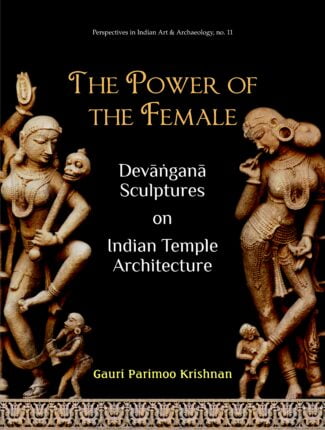
Sculptures of numerous engaging devanganas the surasundari, apsaras and alasakanya figures decorate walls, ceilings and doorways of classical structures in India. The book offers dynamic meanings of these figures in religious and cultural consciousness of India and how they symbolize and illustrate the power of the female in Indian traditions.
This book is an offering to New Art History taking the study of Indian classical sculptural art and traditional Indian iconography to newer heights of interpretation. Sculptures of female figures in classical Indian architectural traditions have enjoyed a special placement and significance. Numerous engaging images of devanganas the surasundari, apsaras and alasakanya figures decorate walls, ceilings and doorways of Hindu temples in India. Viewing the devangana sculptures as a continuation of the yaksi sculptures of Buddhist and Jaina monuments and the concept of primordial mother goddesses of the Vedic times, this challenging work on the devangana sculptures studies the morphology, iconology and semiotic meanings of the devangana figures and their placement in monuments of Gujarat, Rajasthan and Madhya Pradesh between the eighth and twelfth centuries ce.
In a path-breaking effort, the work focuses not on the much-discussed erotic and sexual connotations but explores their dynamic meanings in the religious and cultural consciousness which help to symbolise ßthe power of the femaleû in representational artistic traditions of India. For this, copious architectural and religious texts are examined. With more than 250 illustrations of temple sites and detailed sculptures, this book enquires into the imagery of these figures. A significant aspect of the research is its critiquing of the existing literature on the subject to come up with novel viewpoints and use of tools like dhvani theory, psychoanalysis and feminism to interpret the devangana sculptures.
The book will benefit young researchers, cultural enthusiasts and erudite scholars of Indian art and architecture focused on religious and cultural significance of Indias sculptural heritage.
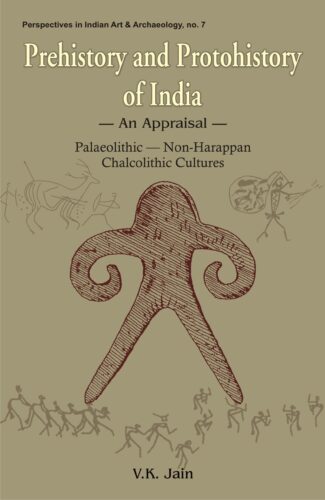
This monograph presents, in a concise but comprehensive manner, a syncretic view of the latest information on various aspects such as tools and technologies, settlement and subsistence patterns, ecological background and distributional configuration in respect of the Stone Age and the Chalcolithic Cultures outside the Harappan Zone. The Megalithic Cultures of peninsular India and the Deccan too find a place in the book
Fresh excavations, new dating techniques and ever-growing conceptual frameworks since 1950 have greatly reshaped our perspective on Prehistory and Protohistory of the Indian subcontinent. This monograph, which is primarily aimed to serve as a starter for the undergraduate and postgraduate students, presents, in a concise but comprehensive manner, a syncretic view of the latest information on various aspects such as tools and technologies, settlement and subsistence patterns, ecological background and distributional configuration in respect of the Stone Age and the Chalcolithic Cultures outside the Harappan Zone. The Megalithic Cultures of peninsular India and the Deccan too find a place in the book. A glossary of the terms used frequently in archaeology as well as maps, line-drawings and explanatory notes on individual sites add further value to the text.